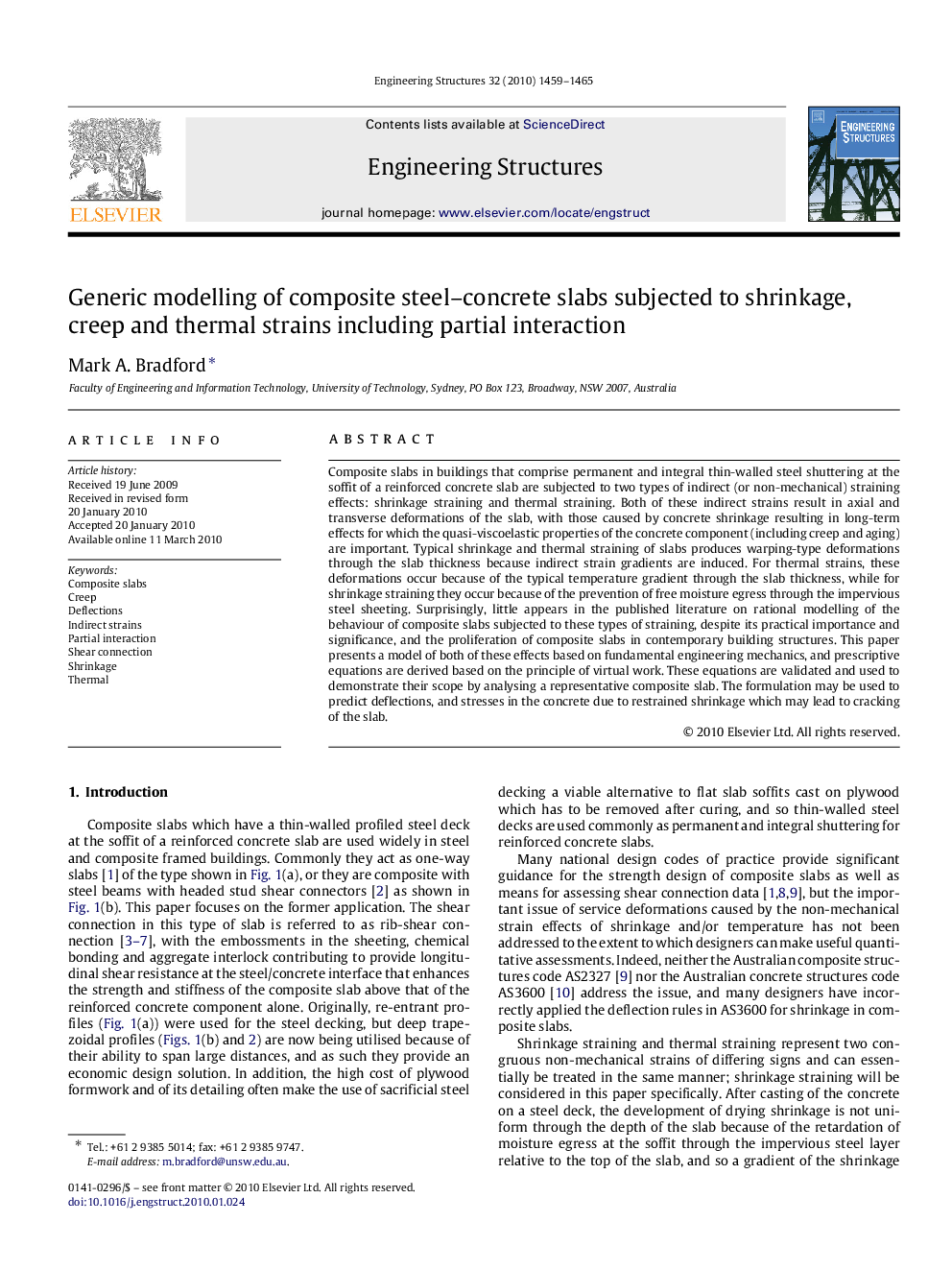| کد مقاله | کد نشریه | سال انتشار | مقاله انگلیسی | نسخه تمام متن |
|---|---|---|---|---|
| 268577 | 504439 | 2010 | 7 صفحه PDF | دانلود رایگان |

Composite slabs in buildings that comprise permanent and integral thin-walled steel shuttering at the soffit of a reinforced concrete slab are subjected to two types of indirect (or non-mechanical) straining effects: shrinkage straining and thermal straining. Both of these indirect strains result in axial and transverse deformations of the slab, with those caused by concrete shrinkage resulting in long-term effects for which the quasi-viscoelastic properties of the concrete component (including creep and aging) are important. Typical shrinkage and thermal straining of slabs produces warping-type deformations through the slab thickness because indirect strain gradients are induced. For thermal strains, these deformations occur because of the typical temperature gradient through the slab thickness, while for shrinkage straining they occur because of the prevention of free moisture egress through the impervious steel sheeting. Surprisingly, little appears in the published literature on rational modelling of the behaviour of composite slabs subjected to these types of straining, despite its practical importance and significance, and the proliferation of composite slabs in contemporary building structures. This paper presents a model of both of these effects based on fundamental engineering mechanics, and prescriptive equations are derived based on the principle of virtual work. These equations are validated and used to demonstrate their scope by analysing a representative composite slab. The formulation may be used to predict deflections, and stresses in the concrete due to restrained shrinkage which may lead to cracking of the slab.
Journal: Engineering Structures - Volume 32, Issue 5, May 2010, Pages 1459–1465